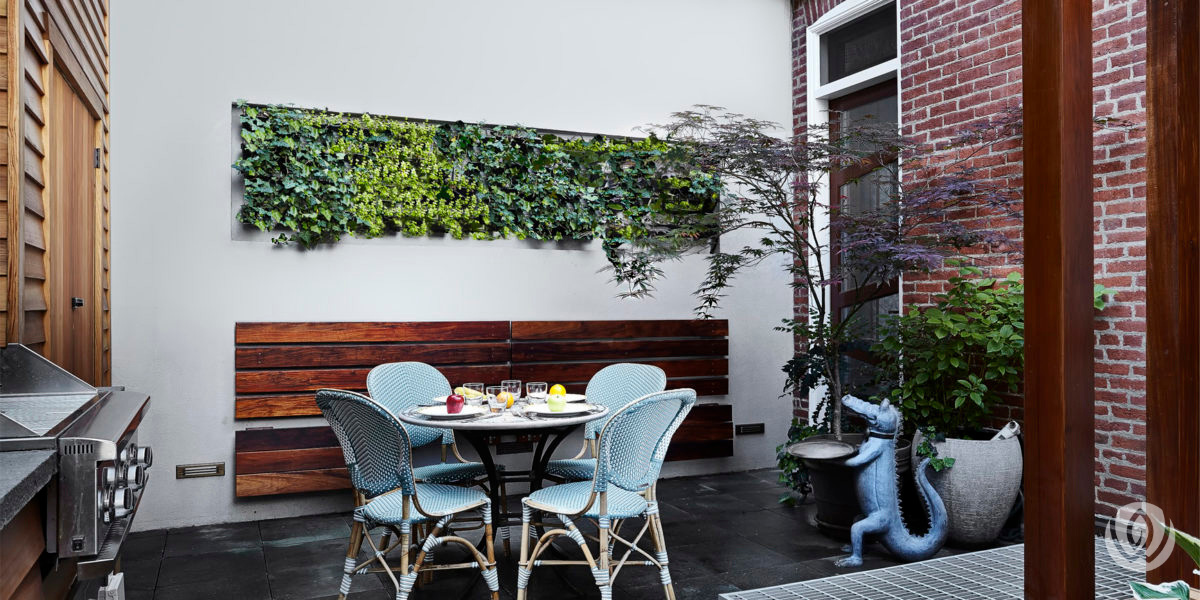
How should you go about selecting plants that will thrive in your Mid-Atlantic landscape? Choosing plants can sometimes be tricky and there are several questions to think about.
These questions and many more are bound to be on your list of things to consider when making plant selections. To help you get started, some of our LiveWell team members came up with a list of seven plants that will flourish in the Mid-Atlantic, particularly if you live in Maryland, Virginia, and Washington, DC.
Here's the list of the seven plants our LiveWell team thinks would be excellent additions to your Mid-Atlantic landscape. Check them out below to learn their common and scientific names as well as why each was recommended.
Matt, our horticulturist and design consultant, thinks the Abelia Rose Creek should be on your list of potential plants for your landscape. This semi-evergreen has pink colored leaves that sit on deep red stems that develop into a dark green color later in the season, offering a rather attractive combination of colors in the winter. Rose Creek also offers fragrant, white flowers from summer through fall.
It is compact, very sturdy, and attracts butterflies, bumblebees, and birds. Abelia Rose Creek is a great option for a front landscape that has southern exposure and if you want a traditional look. It is also extremely durable against pest, diseases, and people and can tolerate bad soils.
Big Blue Lilyturf is a favorite of our Justin's, our VP. It's a beautiful perennial that can be used as an edging plant. It also has flower spikes and clusters of black berries that stand tall among grass-like foliage. Lilyturf can withstand drier conditions as well. Although a perennial, Liriope is considered evergreen as it does not die back until early spring. It's also another plant on this list that can tolerate bad soils.
Bill, our company president and designer, selected Brunnera Jack Frost. This silver colored perennial with distinctive green veins looks very much like a hosta, however, are not on the deer buffet list. Massing together in shady areas will brighten up the shady landscape, and has clusters of tiny blue flowers in the spring.
*Image credits for all pictures are listed at the bottom of this post.
Our project manager, Andy, says that grasses can be a great focal point for many Mid-Atlantic landscapes. And, you can't go wrong with Miscanthus!
It tends to be pest-free and can be used as a hedge or accent plant. The Morning Light variety has slender leaves with a creamy white variegated edge that instantly brightens up the landscape. It's also well known for its beautiful bronze foliage during the winter months. Miscanthus offers some height and color contrast in the winter months and can tolerate bad soils. This variety is also not invasive and does not spread over the years.
Sydnie, our designer, really likes the Cherry Laurel for its shiny, deep green leaves and white flowers. It's also a great foundation plant that does well in full sun or partly shady areas, though it prefers areas where there is good airflow. This low maintenance evergreen shrub is compact (only grows to about 4'-5' tall) and can be used as a foundation plant. As Sydnie says, "It's got good bones!"
Junipers are a popular ground cover for many landscapes but, unfortunately, they need full sun so if you have a shady landscape, they won't thrive. That's why Bill likes the Arborvitae. It looks very similar to a Juniper but it can tolerate shady areas. They also have beautiful feathery foliage with a slight bronzing color in the winter months.
The Weeping Purple Beech is another of Matt's favorite plants for DC Metro Area landscapes. It's actually a tall tree with weeping branches that can make a dramatic statement to your landscape. And, it can also be trained to take on a dome shape.
In the spring, expect the Weeping Purple Beech to be deep purple in color and change over to green during the summer months. During the winter months, it displays large pinnate buds that are a great contrast to the white snow and the bare woods. It's a nice low maintenance option since it doesn't require pruning.
Image Credits
"*" indicates required fields
